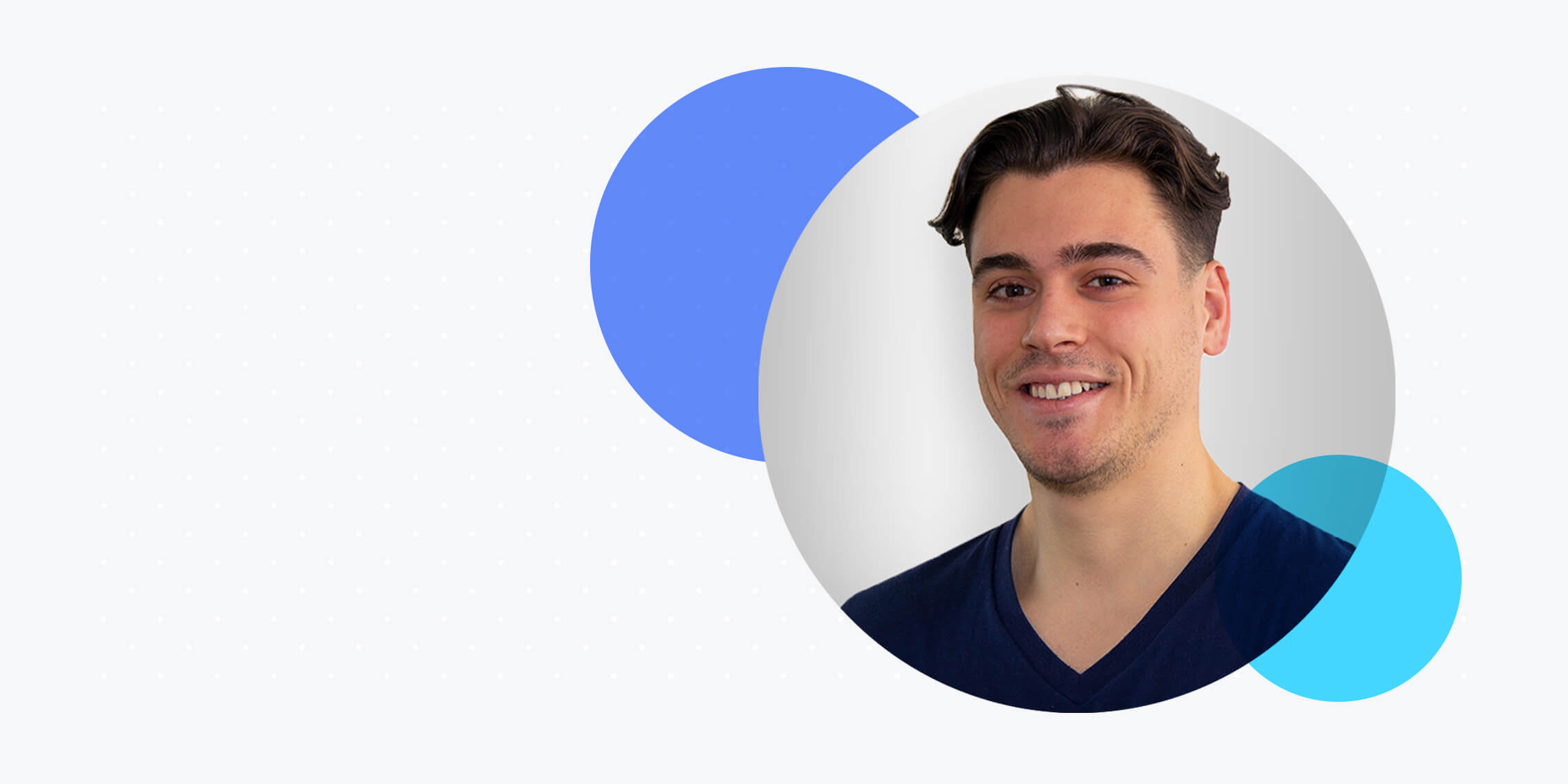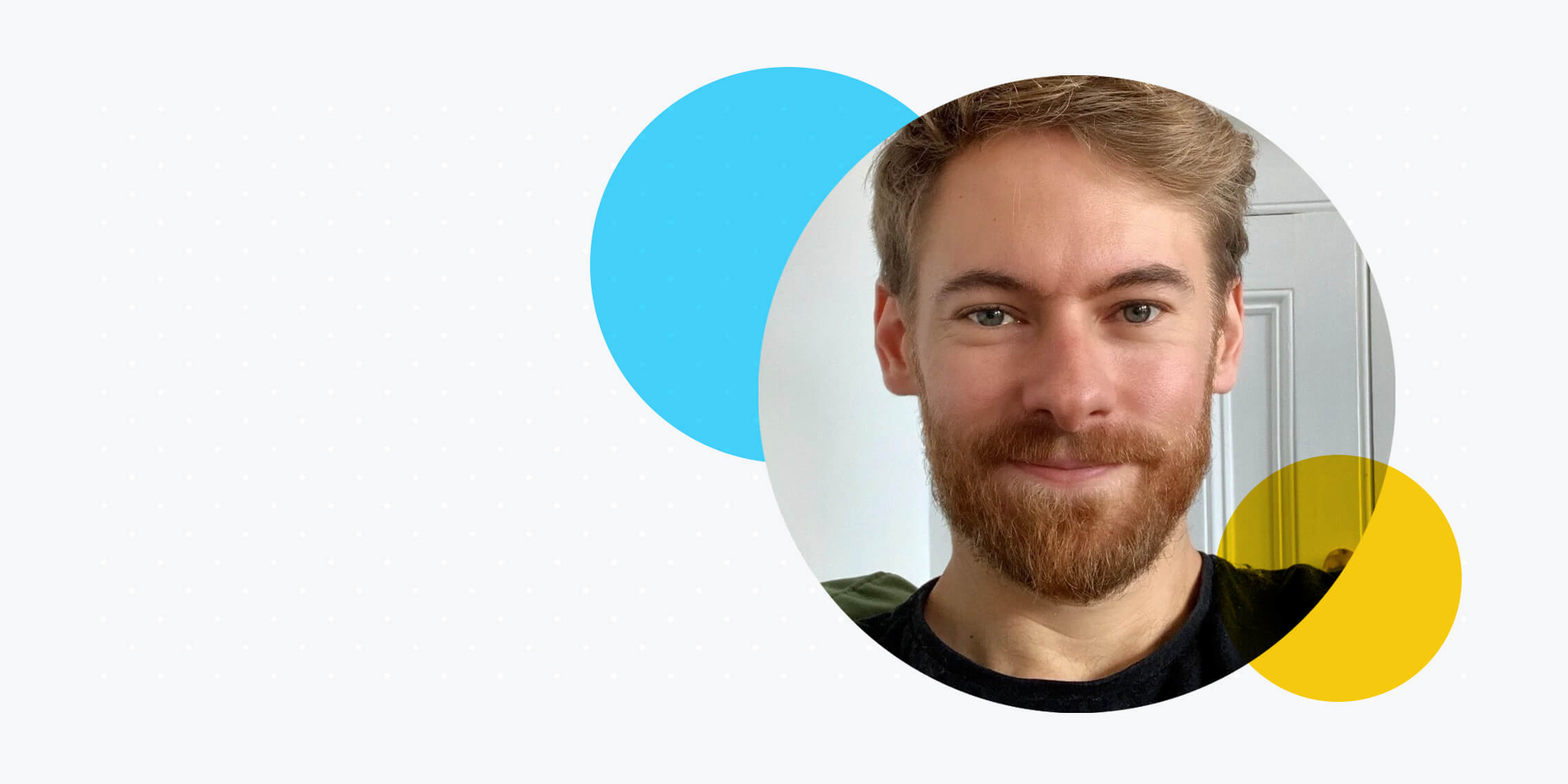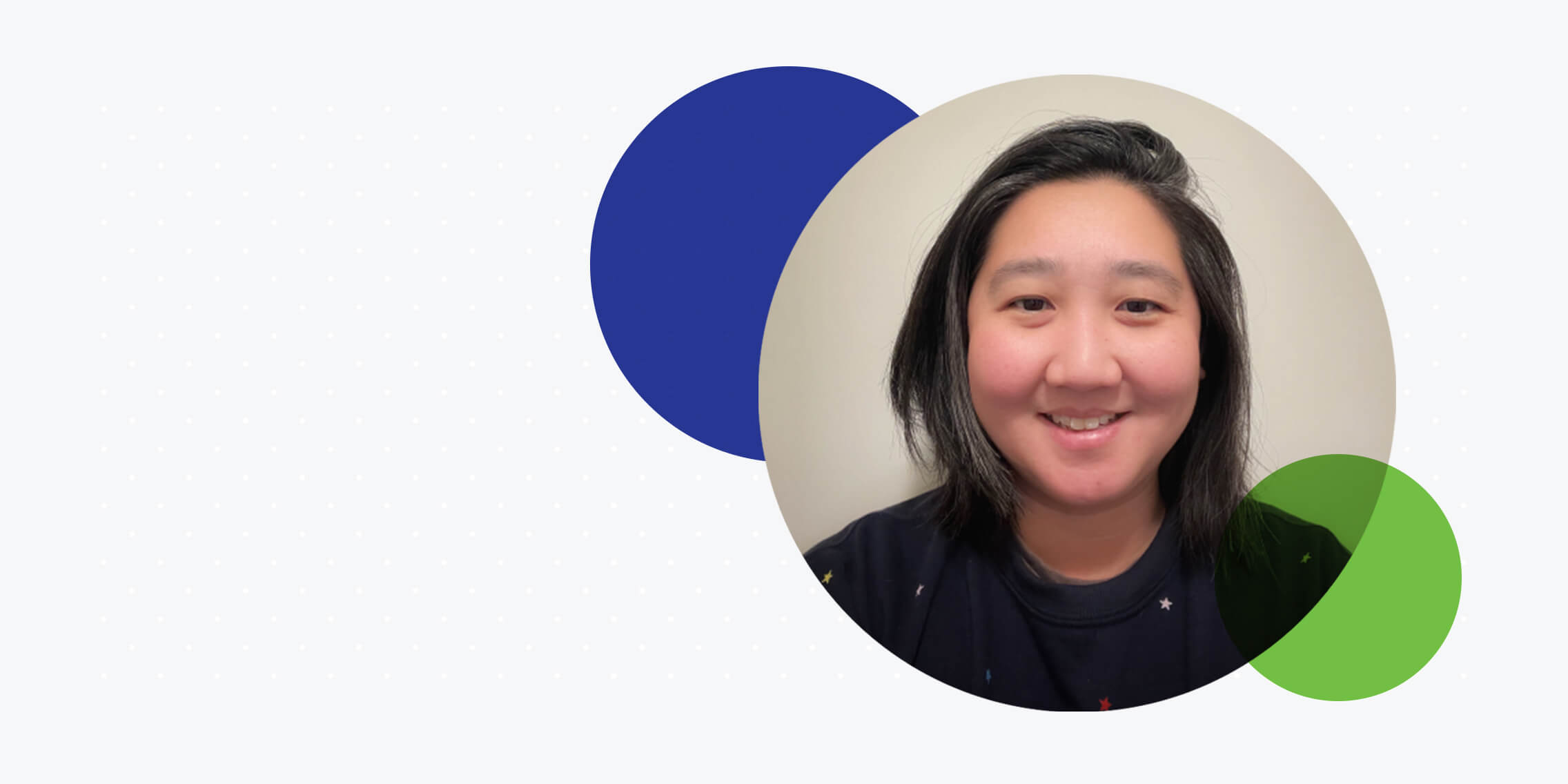Ketan Mistry is an accomplished UX/UI designer based in Manchester, UK. He’s currently working as a User Experience Designer at Yorkshire Building Society.
Prior to that, he led an international team of UX/UI designers and oversaw the UX and product strategy for multiple SaaS products.
You only need to glance at Ketan’s resume to see that he’s carved out an impressive UX career—but he hasn’t always worked in the field. Before learning UX, Ketan worked as a graphic designer between his company’s marketing and IT teams.
He enjoyed his job. But, seeking more impact in his work, Ketan decided to branch out into UX/UI. In 2019, he completed the Professional Diploma in UX Design with the UX Design Institute, followed by the Professional Certificate in UI Design in 2020.
With his new skills—and newfound confidence—Ketan then moved into a lead UX/UI role.
So what inspired Ketan to add UX and UI to his skillset? And how did he navigate the change from graphic design to UX?
Let’s start from the beginning.
From graphic design to UX/UI: where it all began
Ketan started his career in graphic design, gaining experience in the design of marketing and promotional materials, visual merchandising, branding, and creative direction.
He’d always had a passion for design. And, when he was offered the chance to work on a website, Ketan began to see how his skills could be applied to the digital realm.
He was working at Clothes2Order at the time, an e-commerce company specialising in personalised clothing. Ketan describes how he jumped at the chance to get involved in web design, after initially assuming that he would need some coding skills (that’s a common myth in the industry; UX designers don’t actually need to be able to code).
“An opportunity came up at my company to work alongside the IT manager developing the website, and I jumped at it! It gave me the chance to see what’s involved in making websites work better and how that benefits the business as a whole.”
From that moment on, Ketan’s interest in digital design and UX was well and truly piqued. And while he may not have realised it at the time, this chance project would mark the beginning of a new career trajectory.
In pursuit of structure, support, and topic depth: finding the right UX design course
While working on the web design project, Ketan was learning about UX as he went along. And, although learning-by-doing is one of the most effective ways to develop UX skills, Ketan felt that there were critical gaps in his knowledge.
He wanted to bring some much-needed structure to his learning—and to go over key concepts in more depth. So he started looking into UX courses and qualifications as a way to formalise and cement his knowledge.
With so many different options available, Ketan was diligent about doing his research and finding the most suitable course. He explains how the Professional Diploma in UX Design really stood out as one of the most comprehensive courses on the market:
One of the things that really stood out about the Professional Diploma was the depth of the course and the topics and subtopics covered. I could see that the syllabus was really in-depth, and the Professional Diploma was more substantial than other courses. Some were only three months long and offering a job guarantee at the end, which I just didn’t buy into.
This raises an important point to bear in mind when choosing a UX course: there’s a great deal of variety in terms of quality and credibility. Just as Ketan did, make sure you do your research and check that you’re getting a thorough and up-to-date curriculum, as well as plenty of support along the way.
When studying with the UX Design Institute, you have a team of expert mentors and tutors on hand to guide you. For Ketan, this ongoing support proved invaluable—enabling him to quickly overcome any stumbling blocks and make his way successfully through the course:
The support throughout the course was great. Whenever I had difficulty doing something, I could contact my course tutor and ask for help. Having access to the course content while I was working on live projects in my own role was really helpful, too.
Another crucial component of a top-quality UX course: practical work and hands-on projects. As a UX newcomer, it’s essential that you have the chance to apply what you’re learning—and that you build up some impressive case studies for your UX design portfolio.
Ketan highlights how the portfolio-building aspect of the Professional Diploma was both challenging and rewarding—as it should be whenever you’re learning new skills and doing something that’s out of your comfort zone.
The portfolio-building component was quite challenging but enjoyable. I could see that my project work was solving a problem, which really showcased the value of UX. Doing the portfolio exercises gave me a thorough understanding of the challenges faced by UX designers.
Balancing full-time work and study: the challenges and rewards
For many career-changers and UX designers-in-training, learning new skills means balancing work and study. Ketan admits that this was challenging at times, recalling how he would sometimes finish work and have to jump straight into his coursework for the program.
Despite that, learning online and being able to work through the course at his own pace made it much more manageable.
I liked that there was the option to do the course in 6 or 12 months, and the flexibility of the course and the easily digestible videos really helped fast-track my learning.
Moving from graphic design to UX/UI: leveraging new skills and confidence for professional growth
After completing the Professional Diploma in UX Design, Ketan’s role at Clothes2Order evolved from that of graphic designer to UX/UI designer.
With his new skills, Ketan played a pivotal role in evangelising UX throughout the entire company, building a UX team, and improving the user experience across a range of products and platforms.
But it wasn’t just about learning UX techniques and practical skills. The Professional Diploma also gave Ketan the confidence to communicate with different stakeholders (including senior board members) and advocate for a more collaborative company culture.
Ketan explains:
“Before I started advocating for the collaborative UX culture, we were working quite a lot in silos. Nobody really paid attention or realised the full potential of what UX could offer.
The course has definitely helped with my pitching and presentation skills. I can now speak to board-level directors, and I’m comfortable presenting data and research. I know how to package it in the right format for particular stakeholders and get them invested in the idea or the proposal.”
Seeing just how beneficial the UX course was, Ketan went on to complete the Professional Certificate in UI Design—not only with the goal of improving his design skills, but also to give himself a competitive advantage in the job market.
With the Professional Certificate in UI Design, I wanted to further enhance my skills with a better understanding of UI, which means I can now create better designs. There are lots of transferable skills between graphic and visual design, and I thought getting a qualification would give me a competitive advantage down the line.
Five years on: carving out a successful career in UX/UI
Since completing the UX diploma and transitioning from graphic design to UX/UI, Ketan’s career has continued to flourish.
In 2020, he left Clothes2Order and started a new role as a UX/UI designer at software development company THG. After just one year, Ketan was promoted to senior UX/UI designer, responsible for leading a team and overseeing UX and product strategy.
At the time of writing, Ketan is working as a UX designer at Yorkshire Building Society.
In a matter of months, Ketan was able to learn in-demand UX design skills, redefine his career trajectory, and carve out a path of continuous growth and development. His success is not only a testament to his innate curiosity and passion for design but also to his determination and hard work.
Are you considering a UX design course? Ketan’s advice for prospective students
If, like Ketan, you’re a graphic designer looking to transition into UX/UI—or if you’re a design novice wanting to learn in-demand skills—a UX design course can set you on the right path.
Speaking from his own experience, Ketan offers the following advice:
“You need to be passionate about the topic and be ready for a challenge. I’ve encouraged a lot of people to do the Professional Diploma in UX Design because of the range of skills you develop; from tech skills to social skills to presentation skills.”
Ketan also emphasises that you don’t need to come from a design background to become a successful UX designer. In Ketan’s words:
There are so many different routes into UX, and transferable skills that can be applied—you can really come from any background and do well in the field.
You can find Ketan on LinkedIn. If you’d like to learn more about leveraging your transferable skills to pivot into UX, check out this post: Want to become a UX designer? Here’s how your ‘unrelated’ work experience will help you.
Learn new skills with the UX Design Institute
If you too would like to transition to an exciting career in UX/UI design – one of the most in-demand job titles in business today, take the first step with the UX Design Institute. Learn more about their Product Design (UX/UI) Programme, a programme that combines the popular Professional Diploma in UX Design with the Professional Certificate in UI Design, and book a call with an education advisor. They can offer impartial advice about your career change, and answer any questions you may have about the course.
For further inspiration and industry insights, check out the following:
-
Is the UX job market oversaturated? An in-depth analysis and outlook for 2024
-
Starting a career in UX: Why bootcamps and free courses are not the answer





